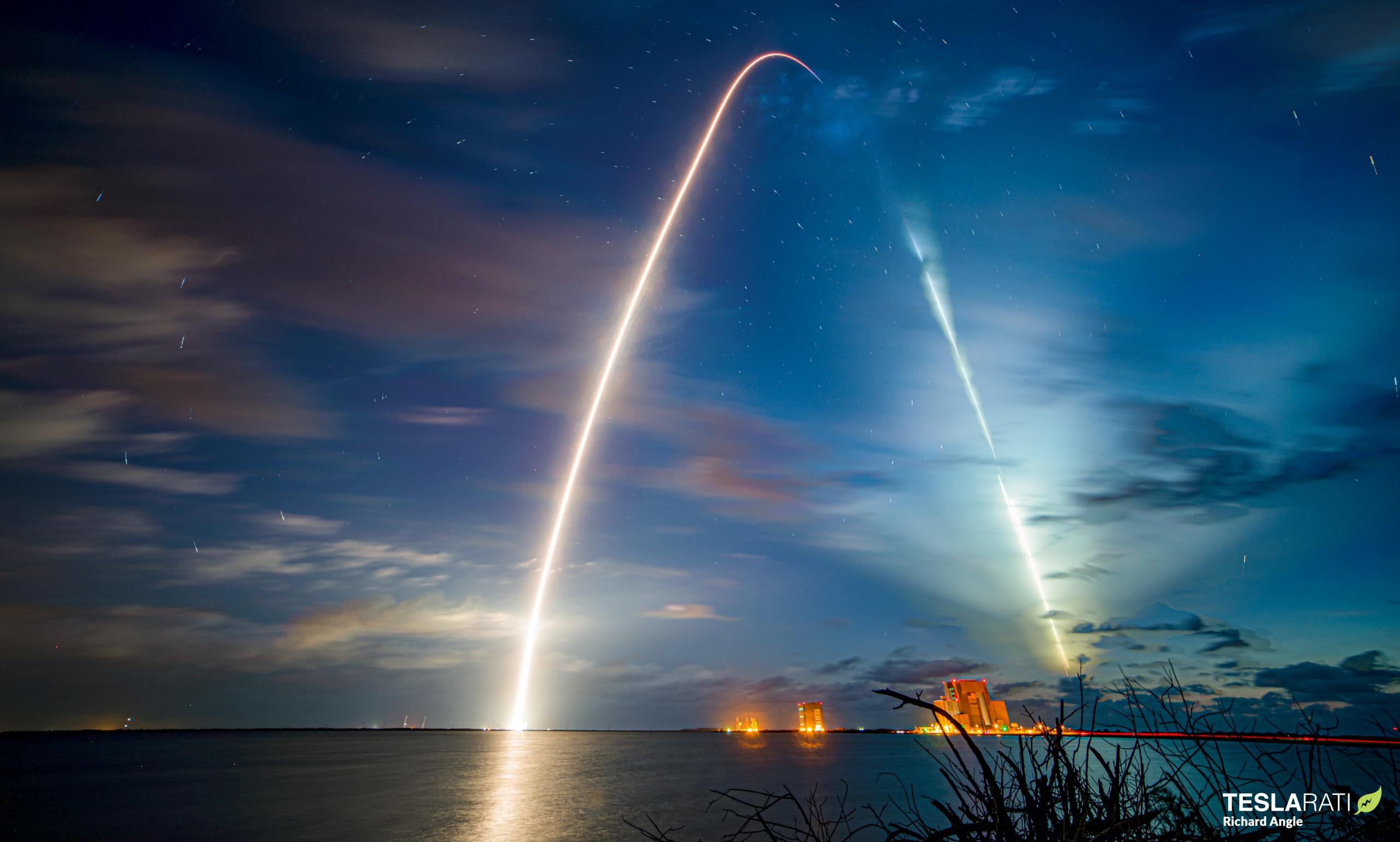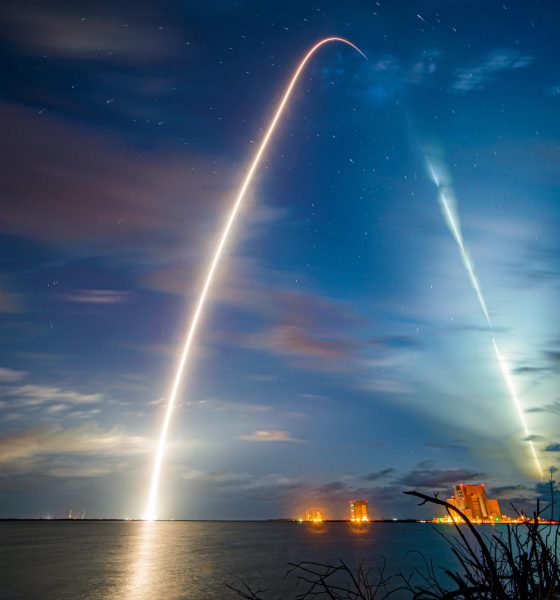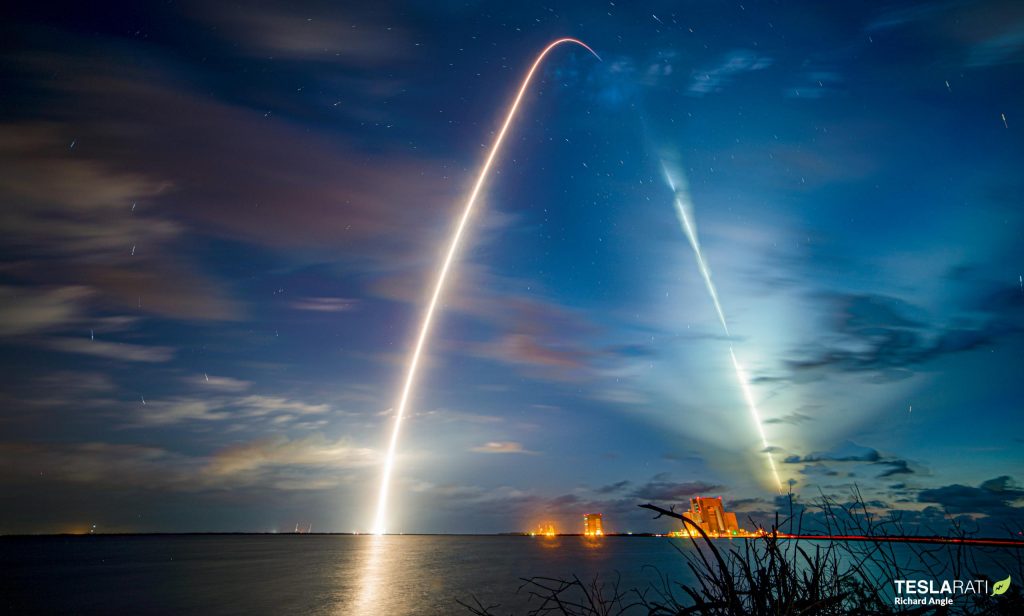

News
SpaceX launches astronauts on flight-proven rocket and capsule in spaceflight first
For the first time in history, SpaceX has sent astronauts into space inside a reused Crew Dragon space capsule with the help of a flight-proven Falcon 9 rocket booster, kicking off a new era of flight-proven human spaceflight.
Aside from NASA’s Space Shuttle, whose orbiter and solid rocket boosters were routinely refurbished for three decades, no other crewed spacecraft or rocket in the history of spaceflight has launched astronauts more than once. SpaceX, a private company, aims to change that and become the second entity of any kind to reuse a crewed spacecraft or rocket. Even more significantly, a successful launch would make Crew Dragon the first space capsule – and Falcon 9 the first liquid rocket – of any kind to be reused on an astronaut launch.
After high winds and seas hundreds or thousands of miles downrange scrubbed a Thursday, April 22nd attempt, weather cooperated on Friday, permitting a flawless liftoff at 5:49 am EDT (09:49 UTC). Excluding nature, the mission has been a flawless technical success from well before launch to well after liftoff, continuing to demonstrate SpaceX’s extraordinary expertise and the refined nature of Falcon 9 and Dragon.

Now safely in orbit, Crew Dragon “Endeavor” (capsule C206) and astronauts Akihiko Hoshide, Thomas Pesquet, Shane Kimbrough, and Megan McArthur have a ~23-hour free-flight ahead of them as their SpaceX spacecraft autonomously works to rendezvous with the International Space Station (ISS). That rendezvous will require five major burns of Draco maneuvering thrusters, the first of which was completed around 40 minutes after reaching orbit.
Barring surprises, Crew Dragon C206 is scheduled to dock with the ISS for the second time no earlier than (NET) 5:10 am EDT (09:10 UTC) on Saturday, April 24th. If successful, the Crew-2 Dragon will join SpaceX’s Crew-1 Dragon at a docking port just a handful of meters away, marking the first time that two Crew Dragons have been simultaneously docked at the ISS.
A bit less than five months ago, the first upgraded Cargo Dragon 2 spacecraft – an uncrewed version of Crew Dragon – joined the same Crew-1 Dragon in orbit and at the ISS, marking a significant first for SpaceX. As the company itself made clear at the time, that milestone was expected to kick off a virtually uninterrupted one to two years of Dragon operations in space, meaning that every additional Crew or Cargo Dragon launch would make for two Dragons in orbit. Crew-2 is the second of those guaranteed dual-Dragon occurrences since Crew-1 launched and docked with the ISS in November 2020.
Pending an equally successful rendezvous with the ISS, Friday’s flawless Crew-2 launch means that the Crew-1 Dragon and astronauts Shannon Walker, Soichi Noguchi, Mike Hopkins, and Victor remain on schedule to depart the ISS and return to Earth on April 28th after six months in orbit. SpaceX’s next Dragon mission – Cargo Dragon 2’s second flight, CRS-22 – is scheduled to launch no earlier than (NET) June 3rd, 2021.


Elon Musk
Elon Musk’s X will start using a Tesla-like software update strategy
The initiative seems designed to accelerate updates to the social media platform, while maintaining maximum transparency.

Elon Musk’s social media platform X will adopt a Tesla-esque approach to software updates for its algorithm.
The initiative seems designed to accelerate updates to the social media platform, while maintaining maximum transparency.
X’s updates to its updates
As per Musk in a post on X, the social media company will be making a new algorithm to determine what organic and advertising posts are recommended to users. These updates would then be repeated every four weeks.
“We will make the new 𝕏 algorithm, including all code used to determine what organic and advertising posts are recommended to users, open source in 7 days. This will be repeated every 4 weeks, with comprehensive developer notes, to help you understand what changed,” Musk wrote in his post.
The initiative somewhat mirrors Tesla’s over-the-air update model, where vehicle software is regularly refined and pushed to users with detailed release notes. This should allow users to better understand the details of X’s every update and foster a healthy feedback loop for the social media platform.
xAI and X
X, formerly Twitter, has been acquired by Elon Musk’s artificial intelligence startup, xAI last year. Since then, xAI has seen a rapid rise in valuation. Following the company’s the company’s upsized $20 billion Series E funding round, estimates now suggest that xAI is worth tens about $230 to $235 billion. That’s several times larger than Tesla when Elon Musk received his controversial 2018 CEO Performance Award.
As per xAI, the Series E funding round attracted a diverse group of investors, including Valor Equity Partners, Stepstone Group, Fidelity Management & Research Company, Qatar Investment Authority, MGX, and Baron Capital Group, among others. Strategic partners NVIDIA and Cisco Investments also continued support for building the world’s largest GPU clusters.
News
Tesla FSD Supervised wins MotorTrend’s Best Driver Assistance Award
The decision marks a notable reversal for the publication from prior years, with judges citing major real-world improvements that pushed Tesla’s latest FSD software ahead of every competing ADAS system.

Tesla’s Full Self-Driving (Supervised) system has been named the best driver-assistance technology on the market, earning top honors at the 2026 MotorTrend Best Tech Awards.
The decision marks a notable reversal for the publication from prior years, with judges citing major real-world improvements that pushed Tesla’s latest FSD software ahead of every competing ADAS system. And it wasn’t even close.
MotorTrend reverses course
MotorTrend awarded Tesla FSD (Supervised) its 2026 Best Tech Driver Assistance title after extensive testing of the latest v14 software. The publication acknowledged that it had previously criticized earlier versions of FSD for erratic behavior and near-miss incidents, ultimately favoring rivals such as GM’s Super Cruise in earlier evaluations.
According to MotorTrend, the newest iteration of FSD resolved many of those shortcomings. Testers said v14 showed far smoother behavior in complex urban scenarios, including unprotected left turns, traffic circles, emergency vehicles, and dense city streets. While the system still requires constant driver supervision, judges concluded that no other advanced driver-assistance system currently matches its breadth of capability.
Unlike rival systems that rely on combinations of cameras, radar, lidar, and mapped highways, Tesla’s FSD operates using a camera-only approach and is capable of driving on city streets, rural roads, and freeways. MotorTrend stated that pure utility, the ability to handle nearly all road types, ultimately separated FSD from competitors like Ford BlueCruise, GM Super Cruise, and BMW’s Highway Assistant.
High cost and high capability
MotorTrend also addressed FSD’s pricing, which remains significantly higher than rival systems. Tesla currently charges $8,000 for a one-time purchase or $99 per month for a subscription, compared with far lower upfront and subscription costs from other automakers. The publication noted that the premium is justified given FSD’s unmatched scope and continuous software evolution.
Safety remained a central focus of the evaluation. While testers reported collision-free operation over thousands of miles, they noted ongoing concerns around FSD’s configurable driving modes, including options that allow aggressive driving and speeds beyond posted limits. MotorTrend emphasized that, like all Level 2 systems, FSD still depends on a fully attentive human driver at all times.
Despite those caveats, the publication concluded that Tesla’s rapid software progress fundamentally reshaped the competitive landscape. For drivers seeking the most capable hands-on driver-assistance system available today, MotorTrend concluded Tesla FSD (Supervised) now stands alone at the top.
News
Elon Musk’s Grokipedia surges to 5.6M articles, almost 79% of English Wikipedia
The explosive growth marks a major milestone for the AI-powered online encyclopedia, which was launched by Elon Musk’s xAI just months ago.

Elon Musk’s Grokipedia has grown to an impressive 5,615,201 articles as of today, closing in on 79% of the English Wikipedia’s current total of 7,119,376 articles.
The explosive growth marks a major milestone for the AI-powered online encyclopedia, which was launched by Elon Musk’s xAI just months ago. Needless to say, it would only be a matter of time before Grokipedia exceeds English Wikipedia in sheer volume.
Grokipedia’s rapid growth
xAI’s vision for Grokipedia emphasizes neutrality, while Grok’s reasoning capabilities allow for fast drafting and fact-checking. When Elon Musk announced the initiative in late September 2025, he noted that Grokipedia would be an improvement to Wikipedia because it would be designed to avoid bias.
At the time, Musk noted that Grokipedia “is a necessary step towards the xAI goal of understanding the Universe.”
Grokipedia was launched in late October, and while xAI was careful to list it only as Version 0.1 at the time, the online encyclopedia immediately earned praise. Wikipedia co-founder Larry Sanger highlighted the project’s innovative approach, noting how it leverages AI to fill knowledge gaps and enable rapid updates. Netizens also observed how Grokipedia tends to present articles in a more objective manner compared to Wikipedia, which is edited by humans.
Elon Musk’s ambitious plans
With 5,615,201 total articles, Grokipedia has now grown to almost 79% of English Wikipedia’s article base. This is incredibly quick, though Grokipedia remains text-only for now. xAI, for its part, has now updated the online encyclopedia’s iteration to v0.2.
Elon Musk has shared bold ideas for Grokipedia, including sending a record of the entire knowledge base to space as part of xAI’s mission to preserve and expand human understanding. At some point, Musk stated that Grokipedia will be renamed to Encyclopedia Galactica, and it will be sent to the cosmos.
“When Grokipedia is good enough (long way to go), we will change the name to Encyclopedia Galactica. It will be an open source distillation of all knowledge, including audio, images and video. Join xAI to help build the sci-fi version of the Library of Alexandria!” Musk wrote, adding in a later post that “Copies will be etched in stone and sent to the Moon, Mars and beyond. This time, it will not be lost.”








